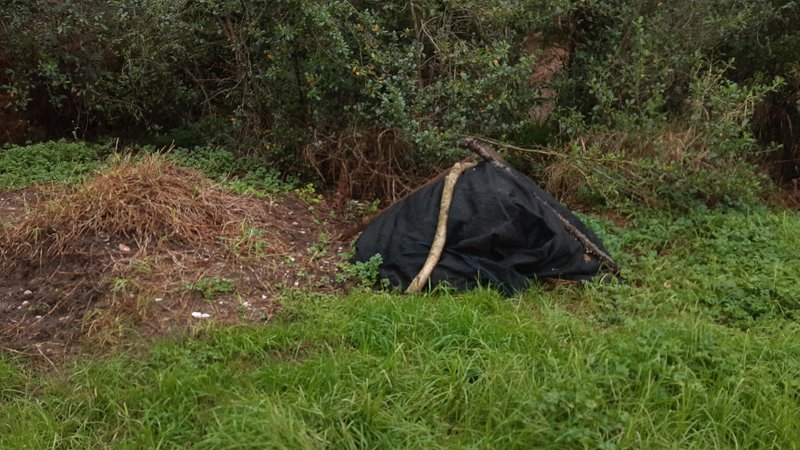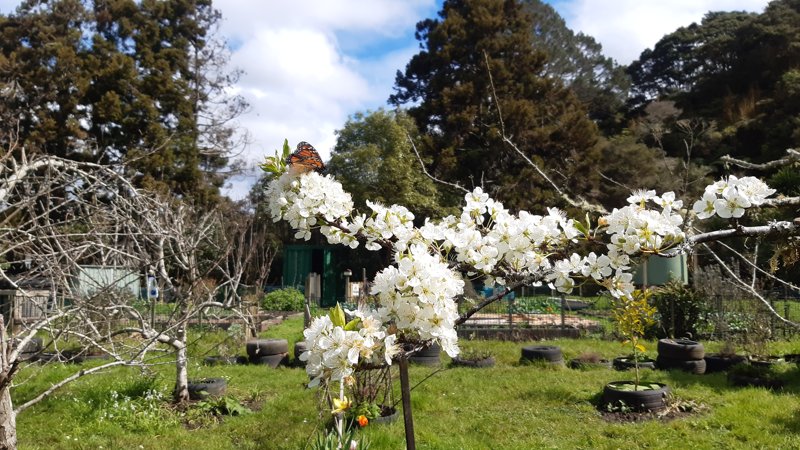
After giving the plum trees a serious prune in April this year, we were a bit worried about how they would do this year and are not expecting a great crop. However, they have surprised us by being covered in blossoms. The photo above shows the Wilson’s early tree with a Monarch butterfly on it. The other plum tree is also now in blossom.
Apple trees are just starting to flower so we have sprinkled some Neem granules around the base of the apple and pear trees to try to deter the codling moth. We also made a cocktail of molasses, apple cider vinegar as per this video from Organic Edible Garden to attract the male moths so we’ll see how many we catch this season. We haven’t done this before so not sure how successful it will be but it’s worth a try.
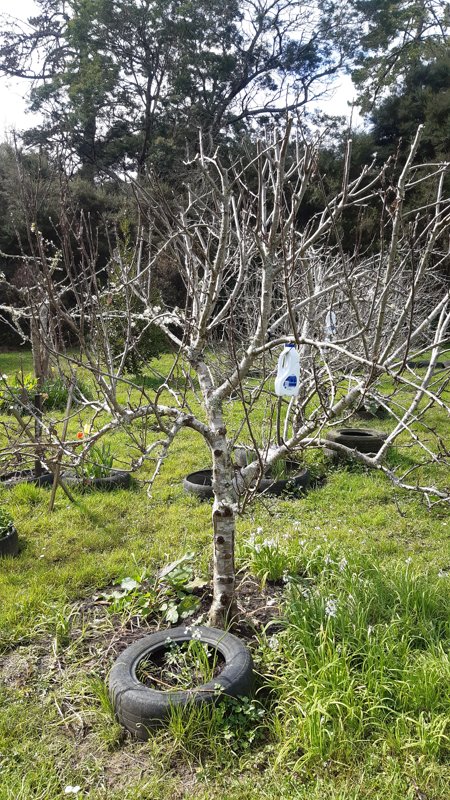
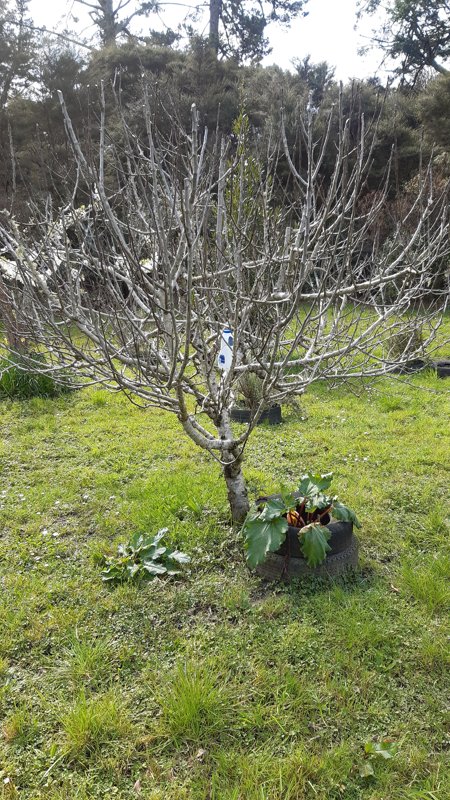
Tulips, daffodils and other bulbs have been bringing some beautiful colour to the orchard and we’ve been preparing tyres around the boundary of the orchard in which we will grow more herbs and flowers. We usually grow courgettes in the tyres but this year we are expecting a drought so may try to keep all vegetables within the garden space to reduce the workload for the watering gang.
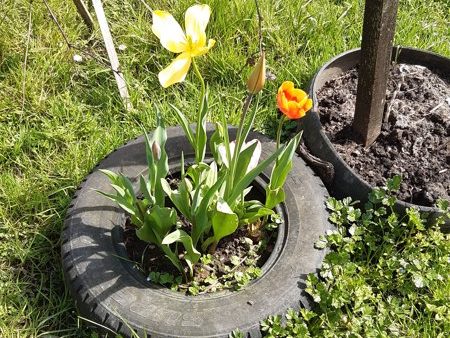
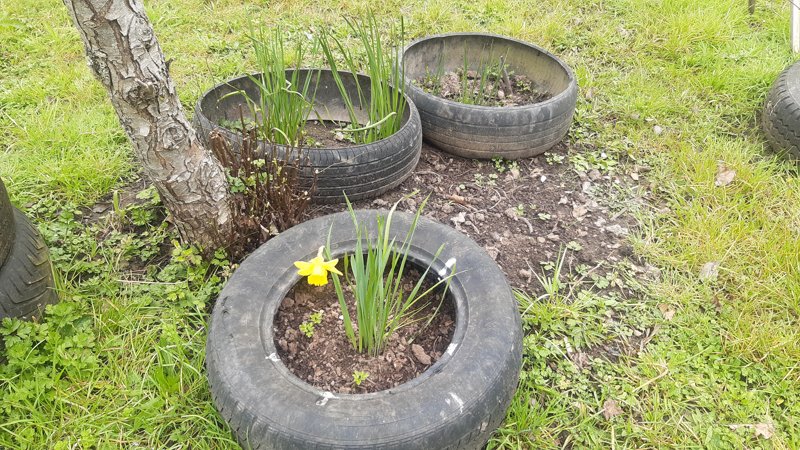
All of the grapefruit trees produced huge numbers of fruit this year. We’ll be looking to prune the trees soon. The Abyssinian banana grove is expanding and the leaves are proving very useful in the garden for covering plots and when they dry up, they are cut up for the compost.
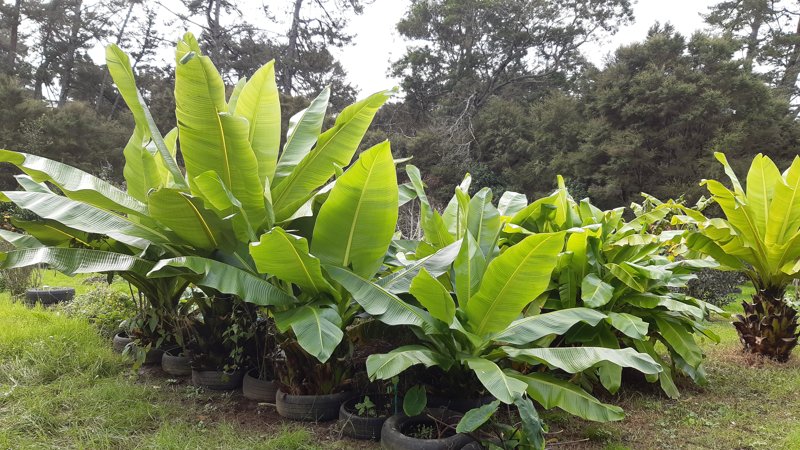
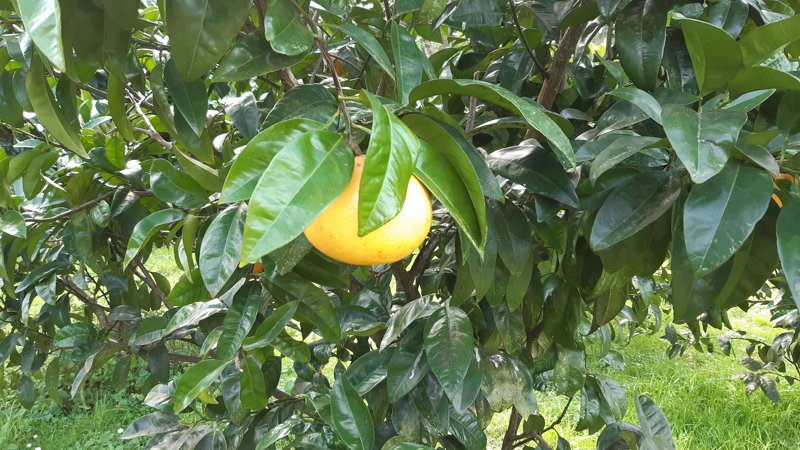
The seagrass/sand pile that has been sitting for a couple of years now is slowly being excavated and the sand/seaweed mixture moved over to one of the bays inside the garden. The kikuyu grass had been enjoying it but now it’s time to make use of it. It’s hard to cut up so much kikuyu so it’s been turned into a hot compost pile which will then be added into the other compost gradually as it breaks down.
